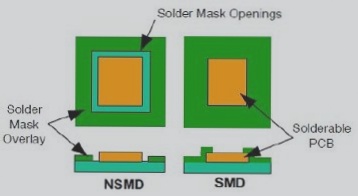The anti-jamming design of a printed circuit board (PCB) is closely related to the specific circuit it serves. Below, we explain a few common anti-jamming measures in PCB design.
1. **Power Line Design**
Based on the current requirements of the PCB, increase the width of the power traces to reduce loop resistance. Additionally, ensure that the power and ground traces align with the direction of data transmission. This alignment helps improve the board’s resistance to noise.
2. **Grounding Design Principles**
(1) Digital ground should be separated from analog ground. If both logic and analog circuits are present on the same PCB, they should be as physically separated as possible. The ground of the low-frequency circuits should be connected at a single point to avoid ground loops. In cases where routing is challenging, a partial series connection may be used before grounding in parallel.

1. The high-frequency circuit should be grounded at multiple points in series, with the ground wire kept as short and direct as possible. A large-area grid-like ground foil should be used around the high-frequency components wherever feasible.
2. The ground wire should be as thick as possible. Using overly narrow ground traces can cause the ground potential to fluctuate with current changes, which diminishes the circuit’s ability to resist noise. To mitigate this, the ground trace should be sufficiently wide to carry at least three times the allowable current for the printed circuit board. Ideally, the grounding trace should be 2-3mm or thicker.
3. The ground wire should form a closed loop. In PCBs that consist solely of digital circuits, the grounding system is typically arranged in loops to enhance noise immunity.
3. **Decoupling Capacitor Configuration**
A standard PCB design practice is to place appropriate decoupling capacitors at key locations on the board. The general guidelines for decoupling capacitor placement are as follows:
1. The power input terminal should be connected to a 10-100µF electrolytic capacitor. If possible, it is preferable to use a 100µF or larger capacitor.
2. Ideally, each integrated circuit chip should have a 0.01µF ceramic capacitor. If the available board space is limited, a 1-10µF tantalum capacitor can be used for every 4-8 chips.
3. For components that are particularly susceptible to noise or experience large power fluctuations when powered down, such as RAM and ROM devices, a decoupling capacitor should be placed directly between the chip’s power and ground pins.
4. Capacitor leads should be kept as short as possible, especially for high-frequency bypass capacitors.
5. When the PCB includes components like contacts, relays, switches, or other parts that generate large sparks during operation, RC circuits should be used to absorb the discharge current. Typically, resistors of 1-2kΩ and capacitors between 2.2µF and 47µF are used for this purpose.
6. CMOS inputs have very high impedance and are sensitive to induction. Therefore, any unused pins should be grounded or connected to a positive power supply to prevent unwanted interference.
If you have any PCB manufacturing needs, please do not hesitate to contact me.Contact me
1. **Power Line Design**
Based on the current requirements of the PCB, increase the width of the power traces to reduce loop resistance. Additionally, ensure that the power and ground traces align with the direction of data transmission. This alignment helps improve the board’s resistance to noise.
2. **Grounding Design Principles**
(1) Digital ground should be separated from analog ground. If both logic and analog circuits are present on the same PCB, they should be as physically separated as possible. The ground of the low-frequency circuits should be connected at a single point to avoid ground loops. In cases where routing is challenging, a partial series connection may be used before grounding in parallel.

1. The high-frequency circuit should be grounded at multiple points in series, with the ground wire kept as short and direct as possible. A large-area grid-like ground foil should be used around the high-frequency components wherever feasible.
2. The ground wire should be as thick as possible. Using overly narrow ground traces can cause the ground potential to fluctuate with current changes, which diminishes the circuit’s ability to resist noise. To mitigate this, the ground trace should be sufficiently wide to carry at least three times the allowable current for the printed circuit board. Ideally, the grounding trace should be 2-3mm or thicker.
3. The ground wire should form a closed loop. In PCBs that consist solely of digital circuits, the grounding system is typically arranged in loops to enhance noise immunity.
3. **Decoupling Capacitor Configuration**
A standard PCB design practice is to place appropriate decoupling capacitors at key locations on the board. The general guidelines for decoupling capacitor placement are as follows:
1. The power input terminal should be connected to a 10-100µF electrolytic capacitor. If possible, it is preferable to use a 100µF or larger capacitor.
2. Ideally, each integrated circuit chip should have a 0.01µF ceramic capacitor. If the available board space is limited, a 1-10µF tantalum capacitor can be used for every 4-8 chips.
3. For components that are particularly susceptible to noise or experience large power fluctuations when powered down, such as RAM and ROM devices, a decoupling capacitor should be placed directly between the chip’s power and ground pins.
4. Capacitor leads should be kept as short as possible, especially for high-frequency bypass capacitors.
5. When the PCB includes components like contacts, relays, switches, or other parts that generate large sparks during operation, RC circuits should be used to absorb the discharge current. Typically, resistors of 1-2kΩ and capacitors between 2.2µF and 47µF are used for this purpose.
6. CMOS inputs have very high impedance and are sensitive to induction. Therefore, any unused pins should be grounded or connected to a positive power supply to prevent unwanted interference.
If you have any PCB manufacturing needs, please do not hesitate to contact me.Contact me




